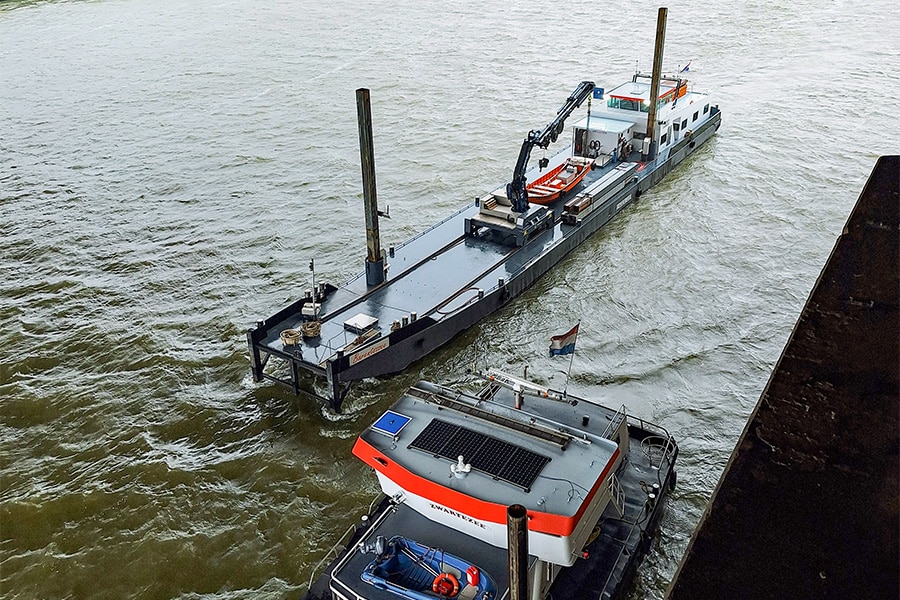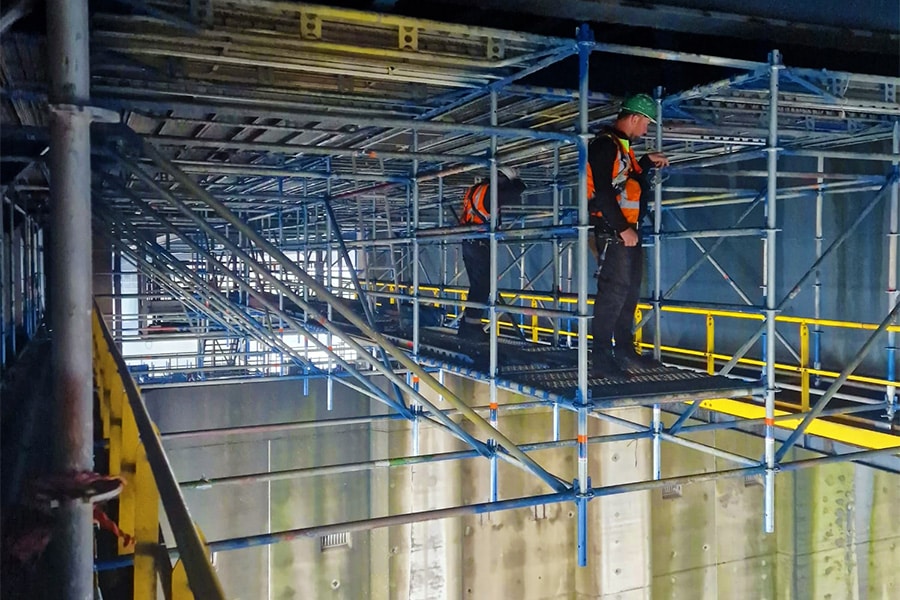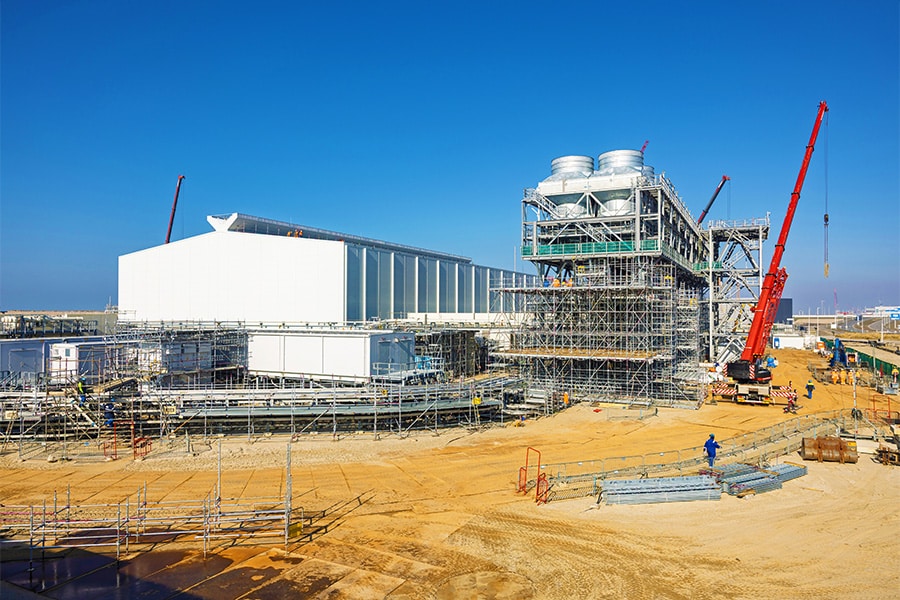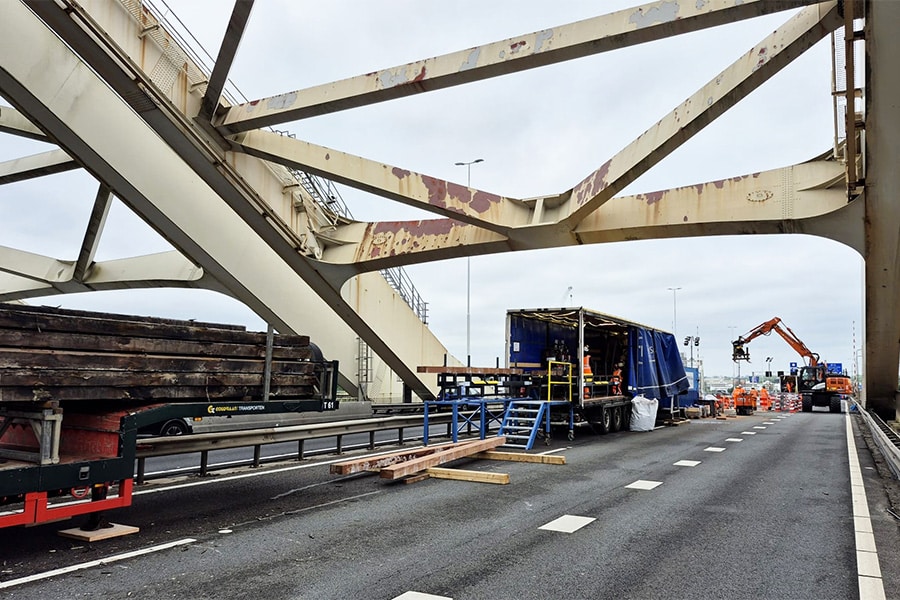
Together strong on the Van Brienenoord Bridge
The Van Brienenoord Bridge is one of the best known and busiest bridges in the Netherlands and is even known as the busiest movable bridge in Europe. The importance of the bridge to the national road network is great, which makes its maintenance crucial. An extensive renovation was recently carried out on the bridge's eastern movable valve. The project was not a standard maintenance job, but an operation in which planning, collaboration and an innovative approach were the keys to success. Led by KnookStaal, in collaboration with Straal- en Schildersbedrijf Feijenoord and several other specialized partners, the entire wooden deck was replaced and the underlying steel structure preserved within two long weekends.
Arnold den Hoedt, project manager at KnookStaal, explains that the project stemmed from the regular maintenance contract "Fixed Maintenance of Moveable Objects" (VOBO) for Rijkswaterstaat. Within this contract, executed by the Combinatie STERK (KnookStaal and Swarco), maintenance is performed on 12 bridges and four locks in South Holland. "Normally, this involves periodic maintenance," says Den Hoedt. "But at the Van Brienenoord Bridge, the situation turned out to be more extensive. The wooden driving deck on the east fall was literally at the end of its service life after sixty years. The beams were affected by moisture and wear and had to be completely replaced." Although Rijkswaterstaat was in the process of a broader tender for major maintenance, the Van Brienenoord Bridge could not wait. "That's why we carried out this project as an additional assignment within our maintenance contract."
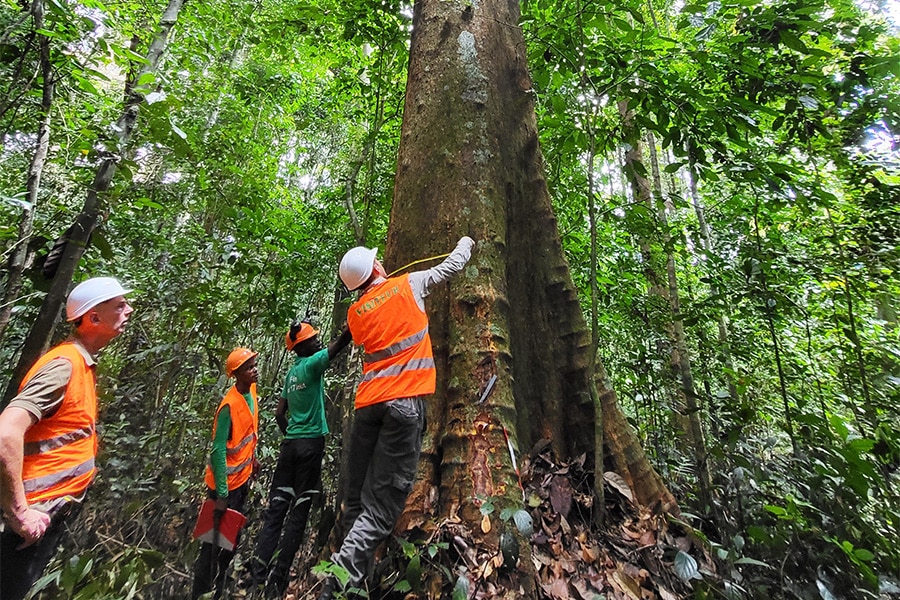
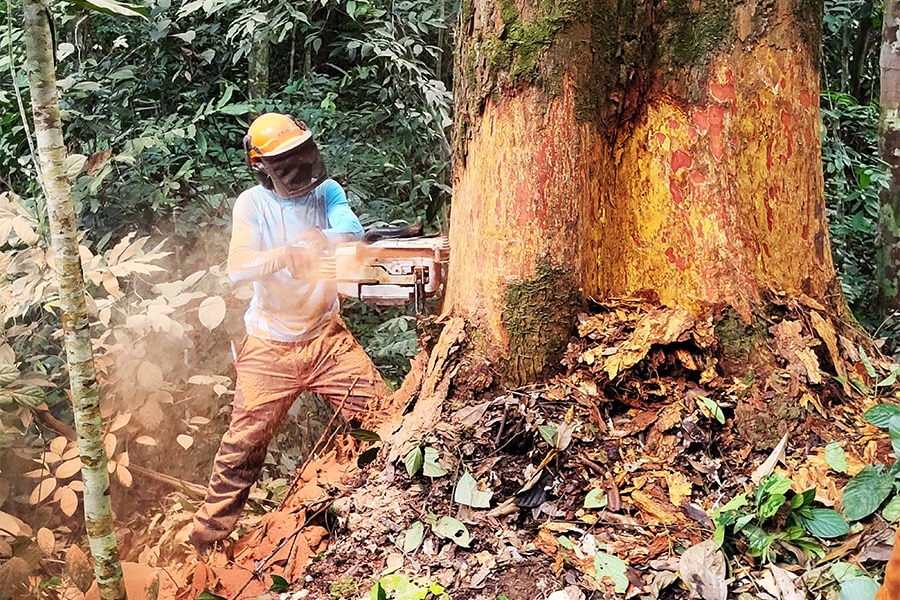
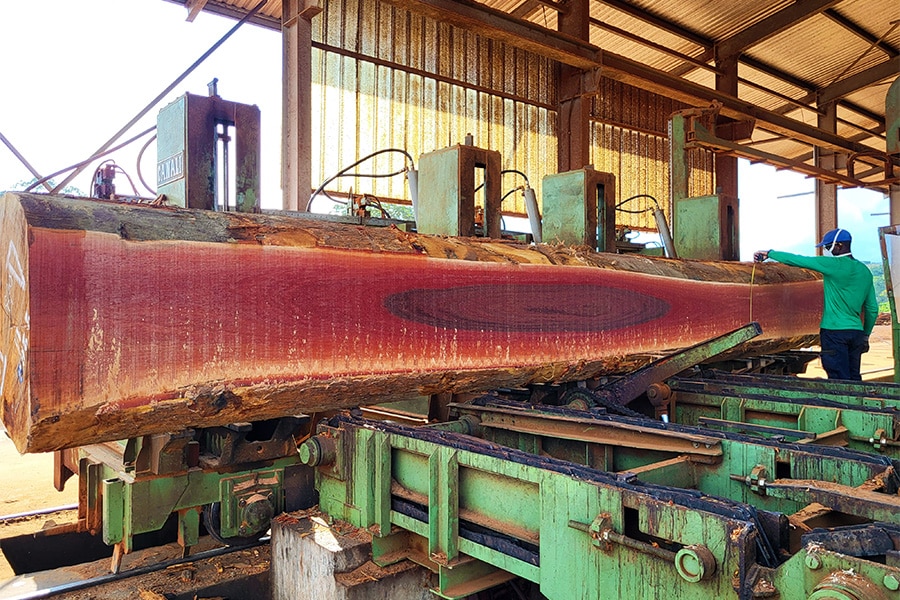
From tree to bridge
A crucial part of the renovation was the replacement of about four hundred Azobé beams. The delivery time and quality of the hardwood posed a major risk. "The beams had to come from Gabon (Central/West Africa, ed.)," says Den Hoedt. "We went on site ourselves to check the quality and ensure the delivery time. By purchasing early, we could be sure that the material was available on time and in the right quality." In addition to the wood, the steel structure also played a role. The underside of the bridge contained old layers of preservation containing chromium-6, which added complexity to the work. Bolted connections could not be loosened after decades, so it was decided to grind everything through. "That meant working in a chromium-6 environment, with all the associated safety measures," says Michel Schreuders, co-owner of Straal- en Schildersbedrijf Feijenoord and responsible for this project.
Innovations
In order to process the beams efficiently, a completely new method was developed: a mobile drilling line. Roller conveyors and drilling stations were set up in truck trailers, allowing the beams to be processed in a factory-like line. "Normally you have to do a lot of drilling on site, which entails risks in terms of safety and quality," says Den Hoedt. "With the drilling line, we were able to work at lightning speed, safely and accurately. This kind of innovation is necessary if you want to break open and replace an entire bridge in just two weekends."
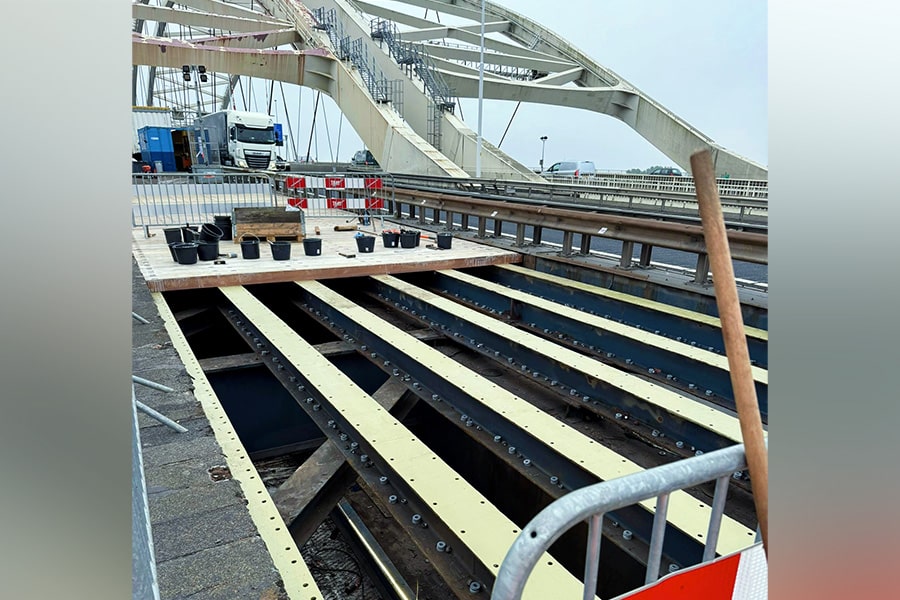
Blasting
Under the bridge, Feijenoord worked in preparation for the weekend closures to blast the steel structure bare. Because chromium-6 was involved, a special approach was taken. Suspended scaffolding under the bridge was completely encased and divided into compartments. Powerful extraction systems were used to prevent hazardous substances from being released into the surrounding area. Schreuders explains, "We worked 24/7 in shifts. Each compartment was carefully handled and then completely cleaned. Blasting grit and dust were collected in special containers and disposed of according to regulations. Intensive work, but crucial to get the job done safely and efficiently within the two long weekends."
Weekend Operation
The actual replacement of the deck took place over two long weekends, with blockages of the A16. "The starting point was: when the road is closed, you have to make the most of it," says Den Hoedt. "We knew we were tight on time. Thanks to all the preparations, the work went faster than expected. This even allowed us to replace additional asphalt on the arch bridge, an action that was still on the list and could be included immediately due to good planning." The preservation was adjusted to the expected remaining life of the bridge. "Instead of the usual 3-layer system, we opted in consultation with the Department of Public Works for a 2-layer system, appropriate to the remaining lifespan of the bridge and crucial to meeting the tight schedule," says Schreuders.
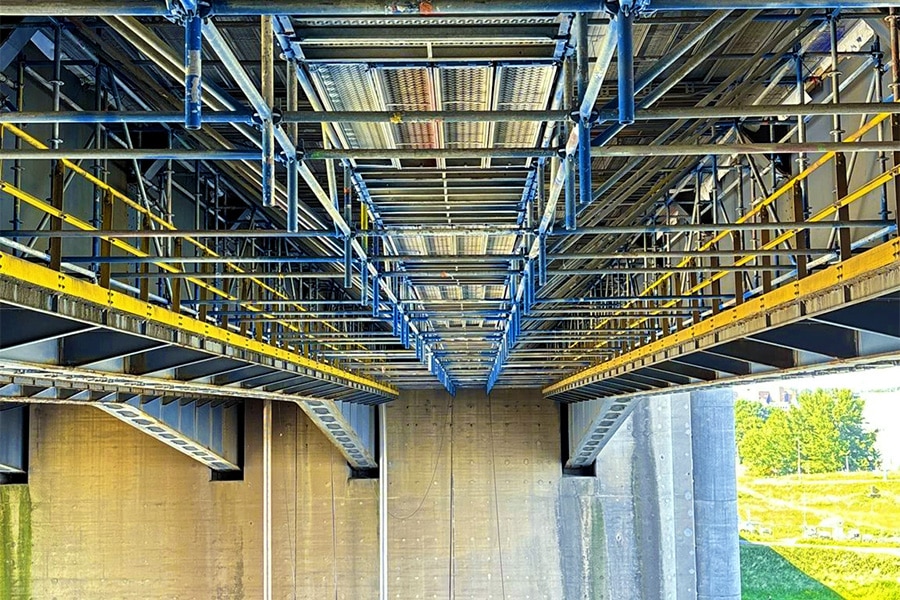
Tired, but fulfilled
During the weekends, some sixty people worked simultaneously on and around the bridge. To keep this on the right track, KnookStaal organized instruction days in advance for all mechanics and supervisors. Den Hoedt: "We wanted everyone to know exactly what to expect. Safety, sequence, materials, everything was gone through. That gave peace of mind and confidence during the work." After long 12-hour shifts, the fatigue was great, but the satisfaction even greater. "Normally you are wrecked after a weekend like this. Now everyone was tired, but with a smile. There was a positive atmosphere because everything went so smoothly. It was hard work, but also enjoying the cooperation and the results."
Collaboration
Intensive cooperation has made this project a success, according to the gentlemen. "Not only between main contractor and subcontractors, but also with the Department of Public Works. Everyone had the same attitude: we do what is necessary, no more and no less. There was openness and trust. All the implementers sat together regularly to go through risks and come up with solutions. You can only complete such a project successfully if you trust each other and share information," says Den Hoedt. Schreuders also shares this opinion and says: "Normally you often see islands forming. Not so here. We could communicate directly with Rijkswaterstaat, or with another subcontractor. That gave tremendous speed and clarity. The project breathed cooperation."
